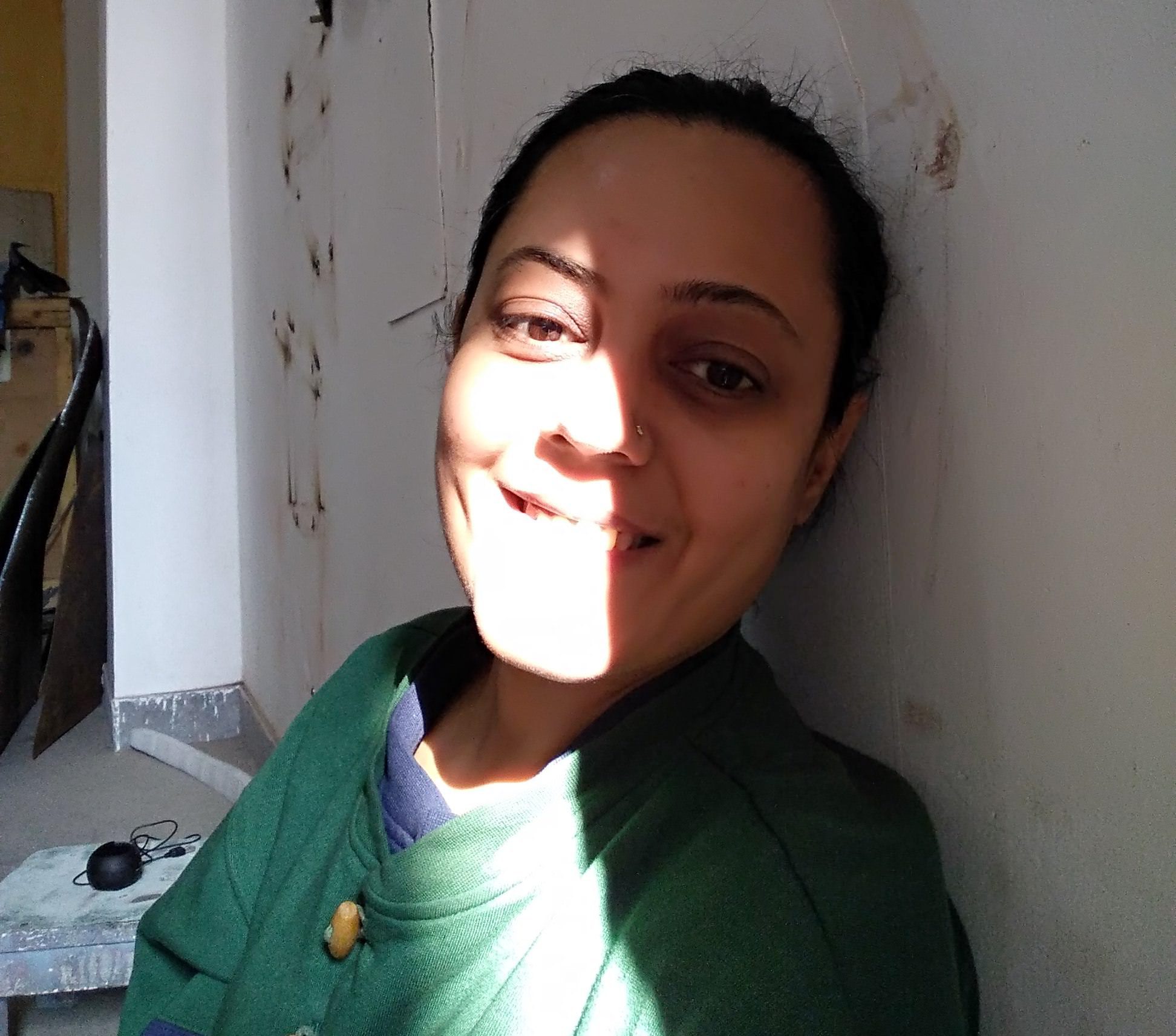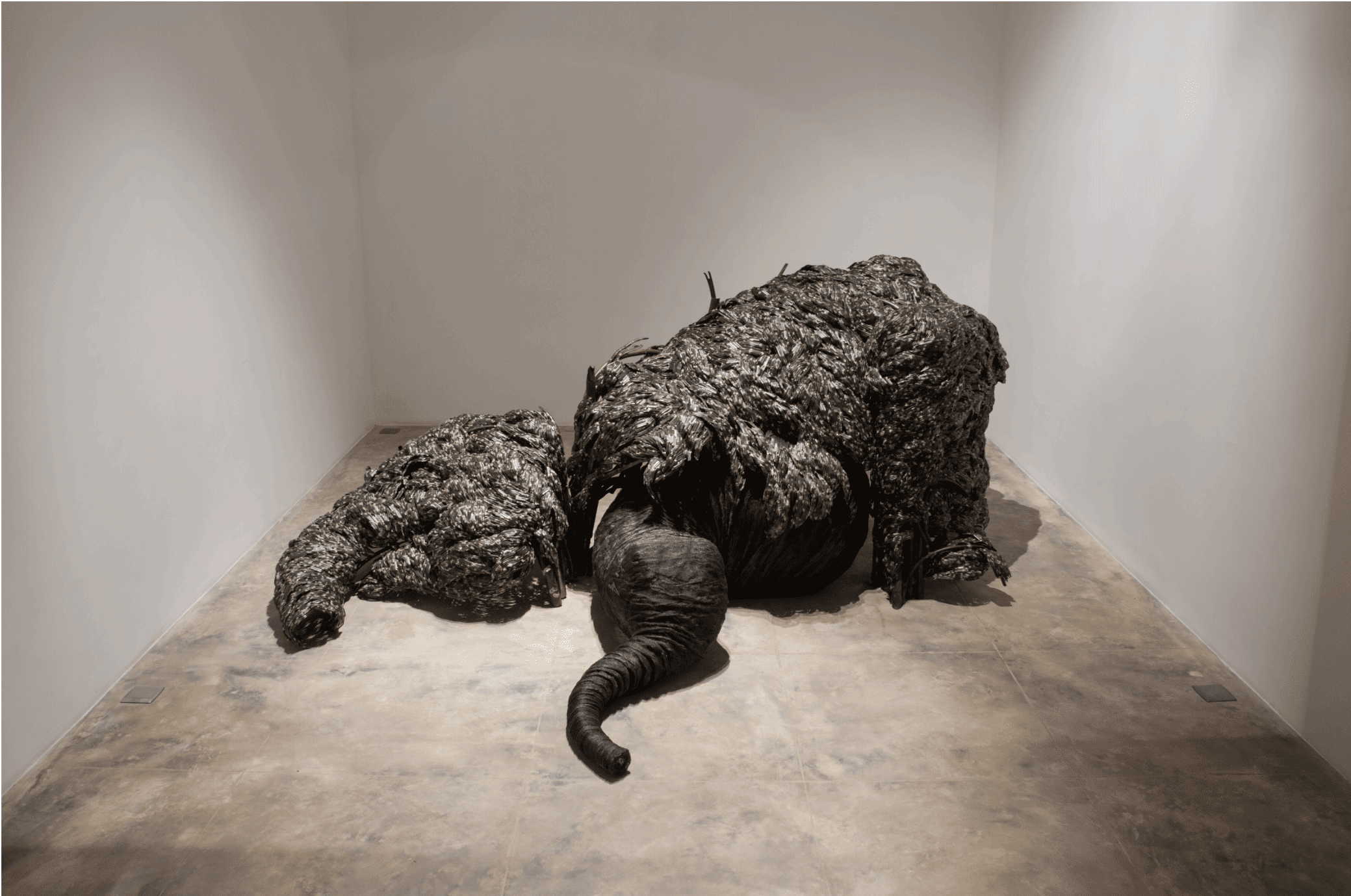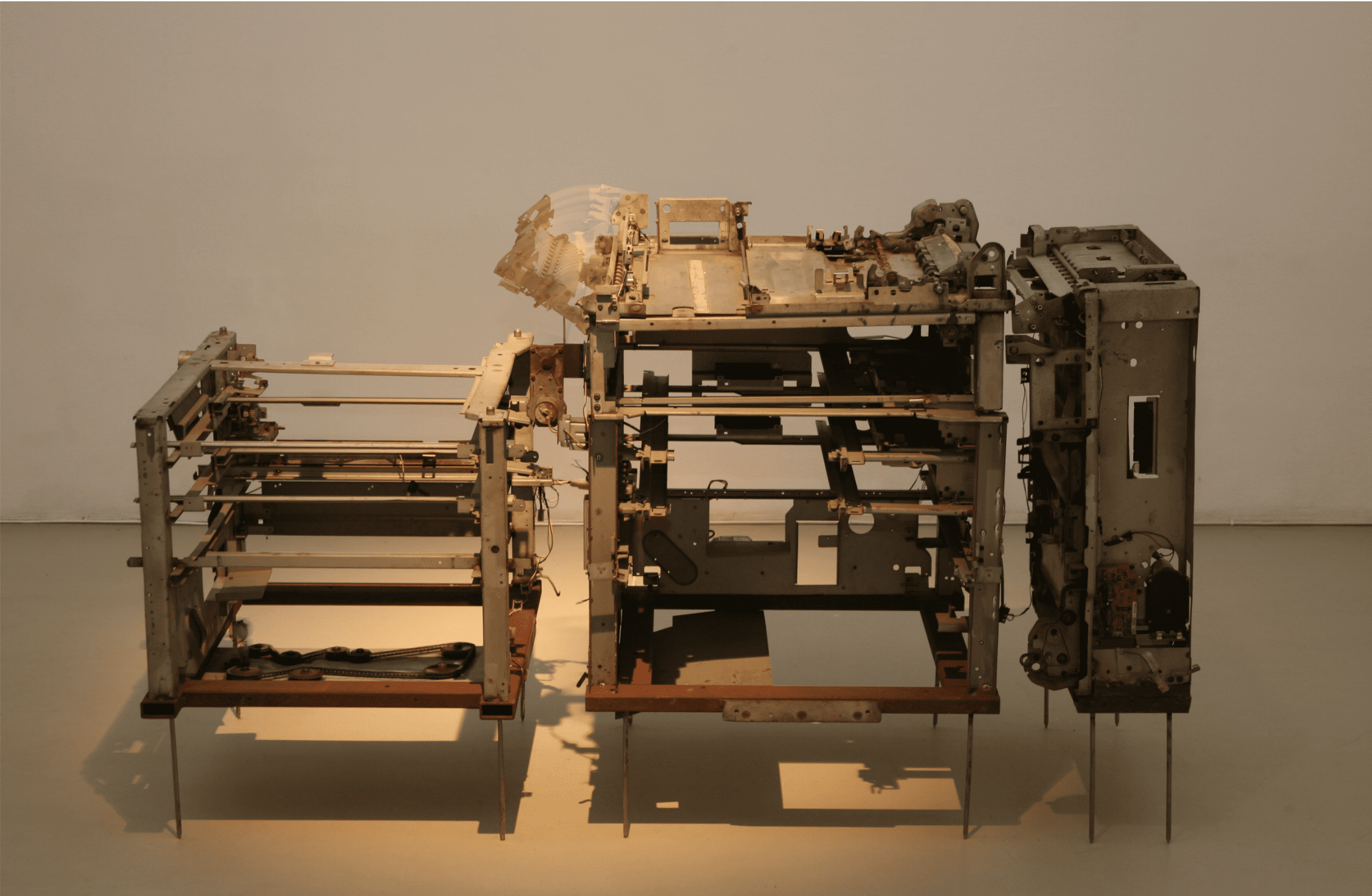
Sakshi Gupta is an accomplished sculptor and mixed media artist from India and one of the Mittal Institute’s Fall 2019 Visiting Artist Fellows. Her practice frames human conditions of understanding, progressing, suffering, and halting due to a lack or gain of knowledge, will, or energy. Her work grapples with the need to achieve a balance between life’s inherent polarities, exhibiting this by utilizing materials often considered waste or ordinary. She’s dedicated her life to an immersive journey through form and material, toward the non-material and experiential.
Upon her arrival to Boston nearly two months ago, Sakshi set out on her journey at Harvard University to investigate the role of materiality in art, expanding upon notions of time, space, value, and process. She was prepared to rethink not only her relationship with spaces and materials, but to examine fresh ways of interweaving them vis-à-vis her practice and home context. She signed up to take Object Matter of Jellyfish: Sculpture Course, a course offered by Nora Schultz at the Carpenter Center for the Visual Arts, hoping to explore the conflicted aspect of the role of the individual in today’s time and stimulate transformation through art.
Sakshi’s time at Harvard has been reorienting and rejuvenating, allowing her to look back on her own pedagogies and perspectives as an artist — specifically as a sculptor — in various ways. Schultz’s class has pushed her to reimagine her concept of sculpture, challenging the notion of sculpture as the formalizing and physicalizing of an idea. Schultz encouraged Sakshi and her classmates to consider other sensorium, such as sound and smell, as capable of evoking the same statement as a conventional, solid form sculpture would. Though this pushed Sakshi outside of her comfort zone and was initially unsettling, it became a fertile space for new ideas to be planted. Despite practicing for over 10 years, Sakshi believes that her intellectual exposure at Harvard was formative for her future as an artist.

Sakshi’s time at Harvard also opened her eyes to the boundaries she had been imposing on herself, in regards to her conception of a “studio.” Although she had already been collecting scrap materials from across Mumbai, her home city, and bringing them into her studio, Sakshi says that her experience at Harvard has made her redefine a studio as one that encompasses the whole city. By making the urban scale her canvas, Sakshi can engage more directly with the environment, creating with it, within it, and around it.
Sakshi values her time at Harvard tremendously because of the distance it has given her from the physical context within which she most often works. With this distance has come a new state of mind and the opportunity to redefine her practice and add new flare to her work. Interdisciplinarity was a large part of Sakshi’s time in Boston, taking her to events across Harvard’s various schools and introducing her to numerous scholars and faculty whose work intersects with her own, such as Karthik Pandian, an Assistant Professor of Art, Film, and Visual Studies, and Rahul Mehrotra, Professor of Urban Design and Planning.

As she prepares to head back to Mumbai to resume her practice, Sakshi looks back on her time at Harvard and with the Lakshmi Mittal and Family South Asia Institute as essential to her evolution and growth as an artist. Now, she believes shaking up her work is something she needs to do every few years. No matter what the next phase and shake-up may bring, what Sakshi learned at Harvard will become a consistent thread throughout her larger artistic practice.
Article by Alexandra Sanyal, Graduate School of Design, Harvard University.
